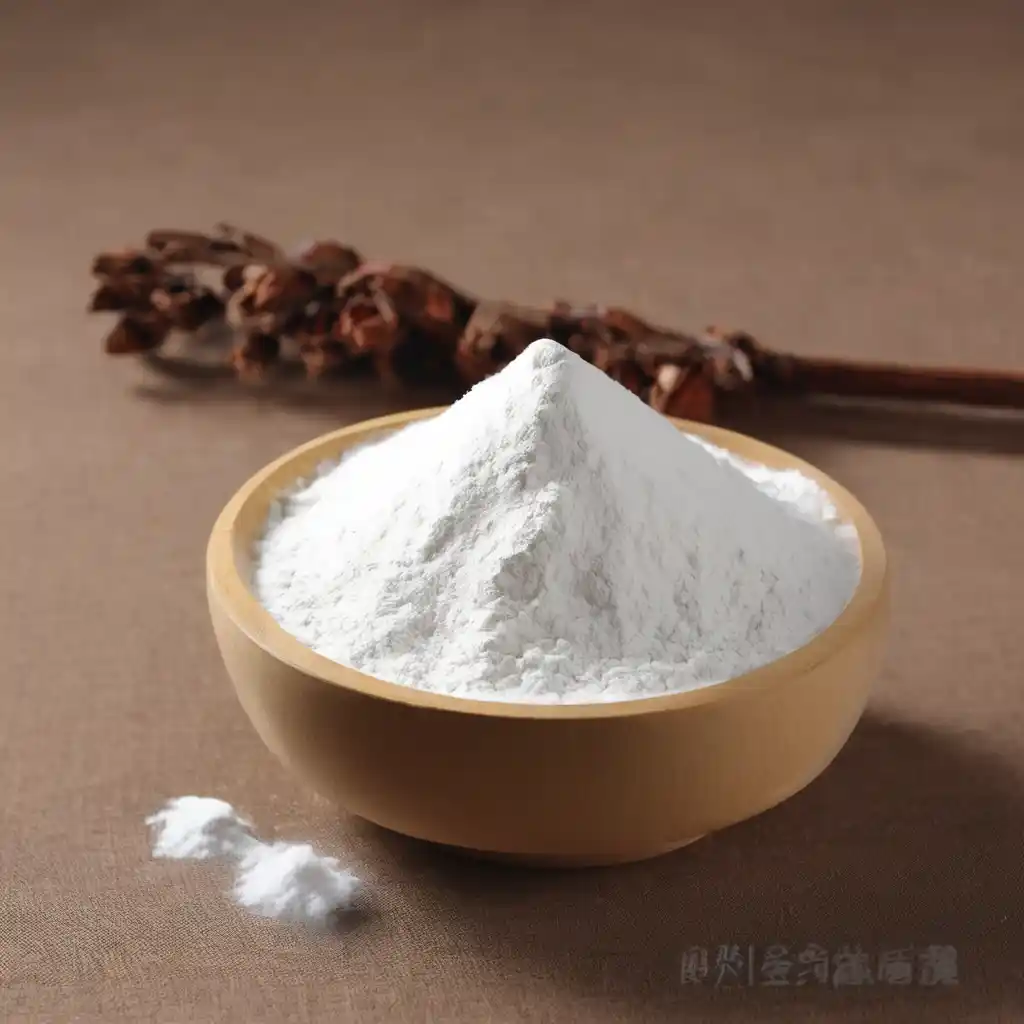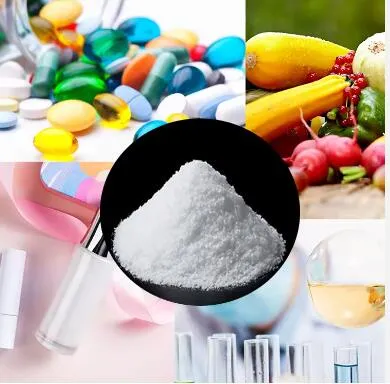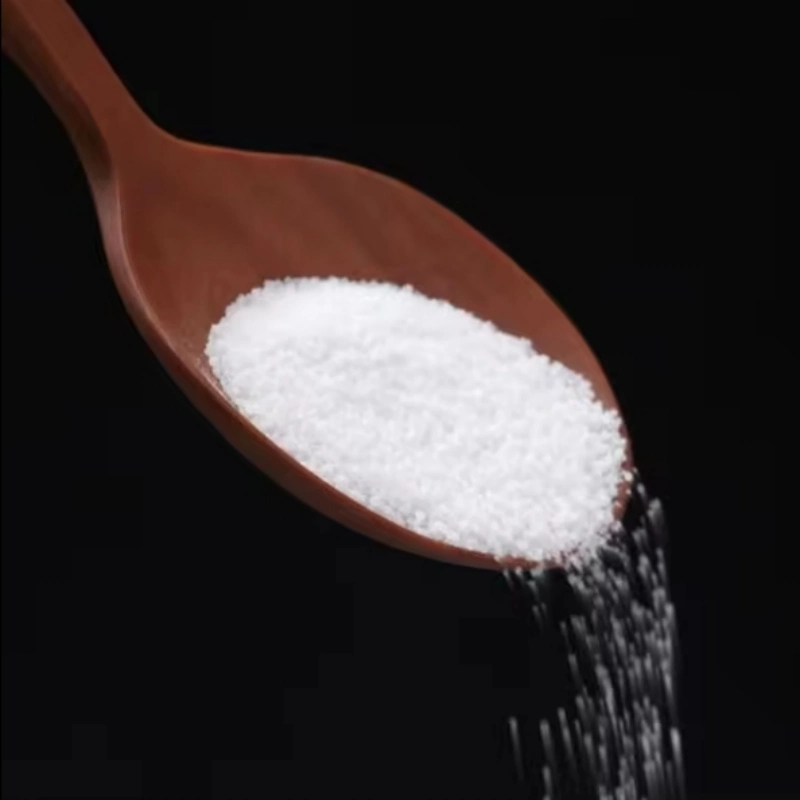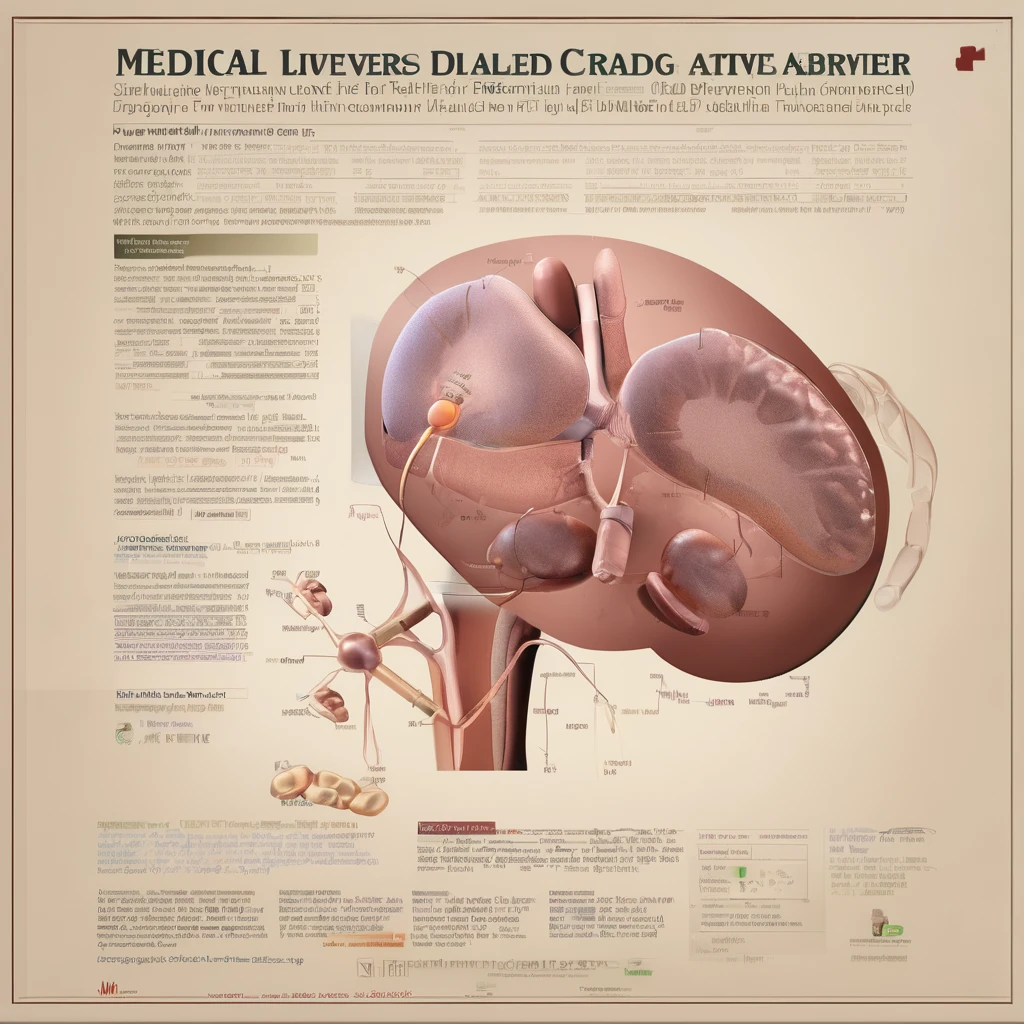Pullulan powder, a polysaccharide produced by the fungus Aureobasidium pullulans through the fermentation of starch, has emerged as a versatile and promising material in biomedical engineering. Known for its biocompatibility, biodegradability, and non-toxicity, pullulan has been extensively researched for its potential applications in drug delivery systems, tissue engineering, and the development of biomedical devices.
Drug Delivery Systems
One of the most significant applications of pullulan powder in biomedical engineering is in the development of advanced drug delivery systems. Pullulan's unique properties make it an ideal candidate for creating nanoparticles, hydrogels, and films that can efficiently deliver therapeutic agents to targeted sites in the body.
Nanoparticles for Targeted Therapy
Pullulan-based nanoparticles have shown great promise in enhancing the delivery and efficacy of anticancer drugs. These nanoparticles capitalize on the unique properties of pullulan, a natural polysaccharide known for its biocompatibility, biodegradability, and non-toxic nature. The ability of pullulan to form stable, water-soluble nanoparticles makes it an ideal material for drug delivery applications.
Case Study: Doxorubicin-Conjugated Pullulan Nanoparticles
One of the most significant advancements in this field is the development of pullulan nanoparticles conjugated with doxorubicin, a widely used chemotherapy drug. Doxorubicin is highly effective in killing cancer cells but is notorious for its severe side effects, including cardiotoxicity. Traditional administration of doxorubicin does not discriminate between cancerous and healthy cells, leading to widespread cytotoxic effects.
Mechanism of Action:
Targeting: Pullulan nanoparticles can be engineered to recognize and bind to specific receptors that are overexpressed on the surface of cancer cells. This targeting capability is often achieved by functionalizing the surface of the nanoparticles with ligands or antibodies that have a high affinity for these receptors.
Internalization: Once the pullulan nanoparticles bind to the cancer cell surface, they are internalized through endocytosis. This process allows the nanoparticles to bypass normal cellular barriers and deliver the drug directly into the cytoplasm of the cancer cells.
Controlled Release: The nanoparticles are designed to release doxorubicin in a controlled manner. This can be triggered by various stimuli within the tumor microenvironment, such as acidic pH, specific enzymes, or even temperature changes. Controlled release ensures a sustained therapeutic effect while minimizing the peak plasma concentrations that are often associated with severe side effects.
Clinical Implications:
In one notable study, pullulan nanoparticles increased the intracellular concentration of doxorubicin by 1.5 times compared to free drug administration. This increase in drug concentration within the cancer cells leads to more effective cell killing and tumor shrinkage. Additionally, because the drug is preferentially delivered to the cancer cells, the surrounding healthy tissues are spared, reducing the overall toxicity of the treatment.
Advantages:
Increased Efficacy: The targeted delivery and controlled release of doxorubicin enhance its anticancer efficacy. The nanoparticles ensure that higher concentrations of the drug reach the tumor site, leading to improved treatment outcomes.
Reduced Side Effects: By minimizing the exposure of healthy tissues to doxorubicin, the pullulan nanoparticles significantly reduce the side effects commonly associated with chemotherapy, such as cardiotoxicity, hair loss, and immune suppression.
Enhanced Patient Compliance: The reduction in side effects can lead to better patient compliance with the treatment regimen. Patients are more likely to complete their course of therapy if they experience fewer and less severe adverse effects.
Future Directions:
The success of doxorubicin-conjugated pullulan nanoparticles paves the way for further research and development in this area. Future studies could explore the use of pullulan nanoparticles for delivering other types of anticancer drugs, including those that are currently limited by poor solubility or stability. Additionally, combination therapies involving pullulan nanoparticles could be investigated to enhance the overall therapeutic efficacy against resistant cancer types.
Pullulan-based nanoparticles represent a significant advancement in targeted cancer therapy. By enhancing the delivery and efficacy of doxorubicin while minimizing its side effects, these nanoparticles have the potential to revolutionize cancer treatment. The promising results from preclinical studies underscore the need for continued research and development to bring these innovative drug delivery systems to clinical practice.
Hydrogels for Controlled Release
Pullulan hydrogels are another innovative application in drug delivery. These hydrogels can encapsulate a wide range of drugs, from small molecules to large proteins, and release them over a prolonged period. This controlled release capability is particularly beneficial for treatments requiring sustained drug presence, such as chronic pain management and hormone replacement therapy. Studies have demonstrated that pullulan hydrogels can maintain a steady release of drugs for up to 30 days, significantly enhancing patient compliance and therapeutic efficacy.
Pullulan is a natural polysaccharide produced by the fermentation of starch by the fungus Aureobasidium pullulans. Its molecular structure consists of repeating maltotriose units, linked through α-1,4 and α-1,6 glycosidic bonds. This unique structure imparts pullulan with excellent water solubility and film-forming capabilities. When cross-linked or combined with other polymers, pullulan can form hydrogels—three-dimensional networks that can hold substantial amounts of water.
Pullulan hydrogels are biocompatible and biodegradable, making them suitable for medical applications. They exhibit high mechanical strength, elasticity, and a porous structure, which are critical for drug loading and release. The hydrogel matrix can be engineered to respond to specific physiological stimuli, such as pH, temperature, or enzymatic activity, enabling precise control over drug release rates.
Drug Encapsulation and Release
The encapsulation process involves incorporating therapeutic agents within the hydrogel matrix. This can be achieved through various techniques, such as physical entrapment, covalent bonding, or ionic interactions, depending on the nature of the drug and the desired release profile. The hydrophilic nature of pullulan hydrogels allows them to swell in aqueous environments, facilitating the gradual release of encapsulated drugs.
The controlled release capability of pullulan hydrogels is particularly beneficial for treatments requiring sustained drug presence. For instance, in chronic pain management, maintaining consistent drug levels can prevent breakthrough pain and improve the quality of life for patients. Similarly, in hormone replacement therapy, a steady release of hormones can mimic natural physiological rhythms, providing better therapeutic outcomes.
Applications in Chronic Pain Management
Chronic pain management often requires the continuous administration of analgesics to maintain effective pain relief. Traditional methods, such as oral tablets or injections, can lead to fluctuations in drug levels, resulting in periods of inadequate pain control. Pullulan hydrogels offer a solution by providing a sustained release of analgesics over an extended period.
Studies have demonstrated that pullulan hydrogels can maintain a steady release of drugs for up to 30 days. This prolonged release minimizes the need for frequent dosing, enhancing patient compliance and reducing the risk of side effects associated with high peak drug concentrations. For example, hydrogels loaded with nonsteroidal anti-inflammatory drugs (NSAIDs) or opioids can provide continuous pain relief, improving the overall management of chronic pain conditions.
Applications in Hormone Replacement Therapy
Hormone replacement therapy (HRT) is another area where pullulan hydrogels show great promise. HRT is commonly used to treat conditions such as menopause, hypogonadism, and thyroid disorders. The goal of HRT is to maintain stable hormone levels within the therapeutic range. Traditional HRT methods, such as oral tablets or transdermal patches, may not always provide the desired consistency.
Pullulan hydrogels can encapsulate hormones, such as estrogen or testosterone, and release them steadily over a prolonged period. This controlled release mimics the body’s natural hormone production, leading to more effective and stable hormone levels. Clinical studies have shown that pullulan hydrogels can release hormones at a consistent rate for several weeks, reducing the need for frequent administration and improving patient adherence to the treatment regimen.
Case Study: Prolonged Drug Release
A notable study published in the journal Biomaterials investigated the use of pullulan hydrogels for the controlled release of insulin. The researchers encapsulated insulin within pullulan hydrogels and evaluated the release profile and bioactivity of the encapsulated insulin. The study found that the hydrogels could sustain the release of insulin for up to 30 days, maintaining its bioactivity throughout the release period. This prolonged release profile is particularly beneficial for diabetic patients, potentially reducing the frequency of insulin administration and improving glycemic control.
Future Directions
The potential of pullulan hydrogels in drug delivery continues to be explored. Ongoing research aims to enhance the mechanical properties and drug loading capacity of pullulan hydrogels through the incorporation of other biopolymers and nanomaterials. Additionally, the development of stimuli-responsive pullulan hydrogels, which release drugs in response to specific physiological conditions, holds great promise for targeted and personalized medicine.
Pullulan hydrogels represent a versatile and effective platform for controlled drug delivery. Their ability to encapsulate a wide range of drugs and provide sustained release over extended periods makes them ideal for applications in chronic pain management, hormone replacement therapy, and beyond. As research progresses, pullulan hydrogels are poised to play a significant role in advancing drug delivery technologies and improving patient outcomes.
Tissue Engineering
Tissue engineering aims to develop biological substitutes that restore, maintain, or improve tissue function. Pullulan powder plays a crucial role in this field due to its ability to form scaffolds that support cell growth and tissue regeneration.
Properties of Pullulan in Tissue Engineering
Pullulan is a natural polysaccharide produced through the fermentation of starch by the fungus Aureobasidium pullulans. Its molecular structure comprises repeating units of maltotriose linked by α-1,4 and α-1,6 glycosidic bonds. This structure imparts several advantageous properties to pullulan:
Biocompatibility: Pullulan is highly biocompatible, meaning it does not elicit an adverse immune response when introduced into the body. This makes it suitable for use in medical applications, including tissue engineering.
Biodegradability: Pullulan is biodegradable, breaking down naturally in the body into non-toxic byproducts. This property is essential for scaffolds, as it ensures that the material will be gradually absorbed by the body without causing harm.
Hydrophilicity: Pullulan's hydrophilic nature promotes cell adhesion and proliferation, which are critical for tissue regeneration.
Mechanical Strength: Pullulan scaffolds exhibit sufficient mechanical strength to support tissue formation, yet are flexible enough to accommodate the dynamic environment of growing tissues.
Scaffold Formation and Applications
Pullulan powder can be processed into various forms suitable for tissue engineering, including hydrogels, sponges, and films. These forms can be tailored to meet the specific needs of different tissue types.
Hydrogels
Pullulan hydrogels are particularly promising for tissue engineering due to their high water content and tissue-like properties. These hydrogels can be cross-linked to form a three-dimensional network that mimics the extracellular matrix (ECM) of natural tissues. The porosity and mechanical properties of the hydrogel can be adjusted to support the growth of various cell types.
Example: In cartilage tissue engineering, pullulan hydrogels can be combined with chondrocytes (cartilage cells) and growth factors to create a supportive environment for cartilage regeneration. Studies have shown that such hydrogels can promote the formation of new cartilage tissue with properties similar to natural cartilage.
Sponges
Pullulan sponges are another form of scaffold that can support cell growth and tissue regeneration. These sponges are created by freeze-drying pullulan solutions to form porous structures. The porosity of these sponges can be controlled to optimize nutrient and oxygen diffusion, which is essential for cell survival and tissue growth.
Example: In bone tissue engineering, pullulan sponges can be impregnated with osteoblasts (bone-forming cells) and calcium phosphate to create a scaffold that supports bone regeneration. Research has demonstrated that pullulan sponges can enhance the formation of new bone tissue, making them a valuable tool for repairing bone defects and fractures.
Films
Pullulan films can be used as surface coatings for implants or as standalone scaffolds for tissue engineering. These films provide a smooth and biocompatible surface that supports cell attachment and growth.
Example: In skin tissue engineering, pullulan films can be used to create artificial skin grafts. These grafts can be applied to burn wounds or other skin injuries to promote healing and tissue regeneration. Pullulan films have been shown to enhance the proliferation and migration of skin cells, accelerating the healing process.
Enhancing Scaffold Functionality
Pullulan scaffolds can be further functionalized to enhance their performance in tissue engineering. By incorporating bioactive molecules, such as growth factors, cytokines, or peptides, into the scaffolds, researchers can create an environment that actively promotes tissue regeneration.
Example: Incorporating vascular endothelial growth factor (VEGF) into pullulan hydrogels can stimulate the formation of new blood vessels (angiogenesis) within the scaffold. This is particularly important for engineering thick tissues, such as muscle or bone, where adequate blood supply is essential for cell survival and tissue function.
Case Studies and Research
Several studies have demonstrated the potential of pullulan-based scaffolds in tissue engineering:
Cartilage Repair: A study published in the journal Biomaterials investigated the use of pullulan hydrogels for cartilage tissue engineering. The researchers found that pullulan hydrogels, combined with chondrocytes and growth factors, promoted the formation of cartilage tissue with mechanical properties similar to natural cartilage. This suggests that pullulan hydrogels could be used to repair cartilage defects and treat conditions such as osteoarthritis.
Bone Regeneration: Research published in Tissue Engineering Part A explored the use of pullulan sponges for bone tissue engineering. The study demonstrated that pullulan sponges, impregnated with osteoblasts and calcium phosphate, supported the formation of new bone tissue. This highlights the potential of pullulan sponges for repairing bone fractures and defects.
Skin Healing: A study in Acta Biomaterialia examined the use of pullulan films for skin tissue engineering. The researchers found that pullulan films enhanced the proliferation and migration of skin cells, promoting wound healing and tissue regeneration. This indicates that pullulan films could be used to create artificial skin grafts for treating burn wounds and other skin injuries.
Future Directions
The potential of pullulan in tissue engineering is vast, and ongoing research continues to explore new applications and enhancements. Future directions include:
Stem Cell Engineering: Utilizing pullulan scaffolds to support the growth and differentiation of stem cells into specific tissue types, offering potential treatments for a wide range of conditions.
Personalized Medicine: Developing patient-specific scaffolds using pullulan, tailored to individual needs and based on advanced 3D printing techniques.
Hybrid Scaffolds: Combining pullulan with other biomaterials, such as collagen or hyaluronic acid, to create hybrid scaffolds with enhanced properties for complex tissue engineering applications.
Pullulan powder's unique properties make it an invaluable material in tissue engineering. Its ability to form biocompatible, biodegradable, and versatile scaffolds supports cell growth and tissue regeneration across various applications. As research progresses, pullulan-based scaffolds are poised to play a crucial role in advancing the field of tissue engineering and improving patient outcomes.
Scaffold Fabrication
Pullulan-based scaffolds are highly effective in promoting cell attachment, proliferation, and differentiation. These scaffolds can be fabricated using various techniques, including electrospinning and 3D printing, to create structures that mimic the extracellular matrix. For example, pullulan scaffolds have been used to engineer cartilage tissue, demonstrating excellent mechanical properties and biocompatibility. In vivo studies have shown that pullulan scaffolds can support the regeneration of cartilage tissue in animal models, paving the way for their use in treating joint injuries and osteoarthritis.
Wound Healing Applications
Pullulan's film-forming ability also makes it suitable for wound healing applications. Pullulan-based films and hydrogels can create a moist environment that accelerates wound healing, reduces scarring, and prevents infection. Clinical trials have shown that pullulan wound dressings can reduce healing time by up to 30% compared to traditional dressings, making them a valuable tool in wound care management.
Biomedical Devices
The development of biomedical devices has also benefited from the unique properties of pullulan powder. Its biocompatibility and ease of modification allow for the creation of devices that interact seamlessly with biological tissues.
Coatings for Implants
Pullulan coatings are used to enhance the performance and longevity of medical implants. These coatings can improve the biocompatibility of implants, reduce the risk of infection, and promote tissue integration. For example, pullulan-coated stents have shown reduced thrombogenicity and improved endothelialization, leading to better patient outcomes. In vitro studies have demonstrated that pullulan coatings can reduce bacterial adhesion by up to 50%, significantly lowering the risk of implant-related infections.
Biodegradable Sutures
Pullulan is also being explored for use in biodegradable sutures. These sutures provide the necessary mechanical support for wound closure while gradually degrading, eliminating the need for suture removal and reducing the risk of complications. Early clinical studies have shown that pullulan sutures maintain their strength for the required healing period and then degrade without causing adverse reactions, highlighting their potential as an alternative to traditional sutures.
Conclusion
The versatility and unique properties of pullulan powder make it a powerful tool in the field of biomedical engineering. Its applications in drug delivery systems, tissue engineering, and biomedical devices are transforming patient care and treatment outcomes. As research continues to uncover new possibilities, pullulan is poised to become a cornerstone in the development of innovative biomedical solutions.
Our company offers pullulan powder of the highest quality. We welcome inquiries and are ready to meet your needs with reliable supply and exceptional customer service. Contact us to learn more about our products and how we can support your business.





